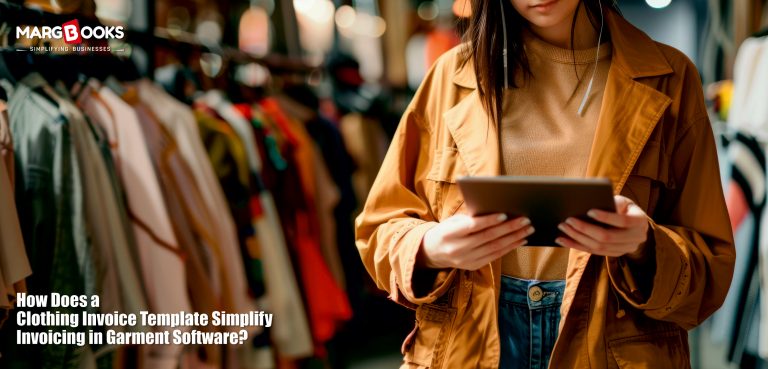Managing a garment business is no walk in the park. Between handling suppliers, managing stock, and ensuring timely deliveries, one area that often becomes a headache is billing. That’s where a Clothing Invoice Template steps in as a game-changer, especially when used alongside reliable garment software like MargBooks.
Let’s dive into how something as seemingly simple as an invoice template can streamline your entire billing process and make your day-to-day operations more efficient.
What is a Clothing Invoice Template?
In the most basic terms, a Clothing Invoice Template is a pre-designed format that helps garment retailers, wholesalers, and manufacturers generate invoices quickly and accurately. Unlike a general invoice, this template is tailored specifically for the fashion and garment industry. It includes fields for:
- Fabric types
- Size and colour variations
- SKU numbers
- Design codes
- Quantity in pieces or sets
- GST and other applicable taxes
This not only simplifies the invoice creation process but also ensures consistency and professionalism in your business dealings.
Why Use a Clothing Invoice Template with Garment Software?
When integrated with a robust garment billing software like MargBooks, the real power of a clothing invoice template shines. Here’s why:
1. Automation and Time Savings
No more typing line after line or calculating totals manually. With garment software, the template automatically pulls item details, calculates taxes, and fills in client information. What earlier took 20-30 minutes can now be done in under 5 minutes.
2. Minimises Human Errors
Manual billing is prone to mistakes—whether it’s a missed tax calculation, incorrect item description, or a wrong client detail. A predefined template within your garment software eliminates most of these errors by auto-filling data and applying standard rates and discounts.
3. Customisation for Brand Identity
With software like MargBooks, you can fully customise your clothing invoice template—add your logo, choose your colour palette, and include your business terms and conditions. It helps reinforce your brand image every time an invoice goes out.
Key Features to Look for in a Clothing Invoice Template
Not all templates are made equal. A well-structured clothing invoice template used in garment software should ideally offer:
- GST and tax calculation support
- Barcode integration
- Harmonised SKU management
- Discounts and offer fields
- Customer loyalty tagging
- Multi-size and colour variation support
- Multi-party invoicing (B2B & B2C)
MargBooks offers templates with all these features, making it one of the most preferred garment billing software options in India.
Benefits of Using Garment Software like MargBooks
Pairing your clothing invoice template with MargBooks provides a host of benefits:
● Seamless Inventory Management
Invoices are directly linked with stock levels. So the moment a bill is generated, your inventory is updated in real-time—no need for double entries.
● GST Compliance
MargBooks is fully GST-compliant, helping businesses stay audit-ready without scrambling for old bills or misfiled records.
● Data Security and Cloud Backup
All your invoices and customer data are securely backed up in the cloud, so even if your local system crashes, your records are safe.
● Insights and Reports
Want to know which garment design is selling the most or which customer shops the most frequently? Garment software like MargBooks offers detailed reports to support better decision-making.
Real-Life Scenario: How Radhika Garments Simplified Billing
Take the example of Radhika Garments in Surat. Before switching to MargBooks, they were using Excel sheets and manual bills. Errors were frequent, billing was slow, and they often missed adding GST correctly.
After adopting MargBooks with its built-in clothing invoice template, their billing process became seamless. Invoices could be generated within minutes, stocks were updated automatically, and GST calculations became accurate. The best part? Their invoices now carry a polished, professional look that impresses customers.
Common Mistakes to Avoid While Using Clothing Invoice Templates
Even with the best tools, a few common mistakes can slow you down:
- Not updating your template regularly: GST rates or item descriptions might change.
- Ignoring software updates: MargBooks regularly releases updates to improve performance and compliance—don’t skip them.
- Skipping training: A short onboarding session can save hours of confusion later.
- Not customising the template: A generic template lacks the professional appeal your brand deserves.
Final Thoughts
In today’s fast-paced garment industry, staying ahead means adopting tools that offer speed, accuracy, and convenience. A Clothing Invoice Template, when used with a reliable garment billing software like MargBooks, not only simplifies invoicing but also enhances your overall business efficiency.
It’s high time to say goodbye to manual bills and messy spreadsheets. Let technology do the heavy lifting, while you focus on growing your business.




